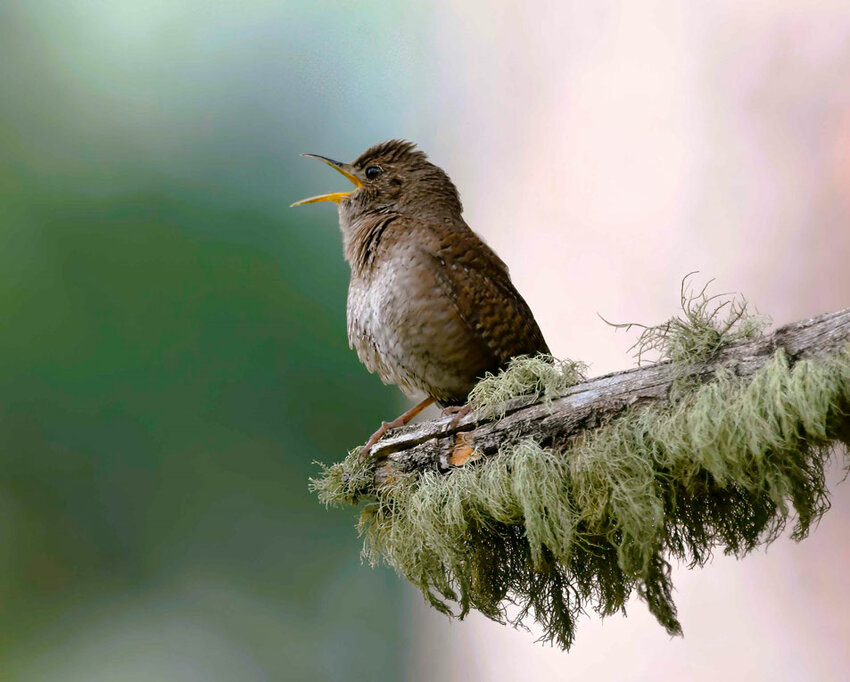
Photo courtesy Barry Knott
This week’s Bird of the Week, compliments of the Weminuche Audubon Society and Audubon Rockies, is the house wren.
Translated from the Chippewa language, the name for this bird means “big noise for its size.” Hearing the loud, bubbly song of this bird may have you expecting one much larger than the tiny house wren. In mating season, a male may sing from dusk to dawn and, on occasion, females join in.
Both sexes are small brown birds with relatively long, curved beaks and dark barring on their wings and tail held upright. Their scolding calls are often heard from deep within the brush.
This backyard bird, common over nearly the entire Western Hemisphere in summer, is another that evokes conflicting emotions in people. Some love it for its cheery song, acrobatic antics and willingness to devour garden pests. But its fierce defense of nesting territory can be alarming to witness.
In an attempt to ensure nesting success, the house wren will invade the cavity nests of neighboring birds to pierce holes in their eggs, peck both nestlings and adult birds, and even throw nestlings to the ground. Males will fill vacant cavities and nest boxes with twigs to prevent other birds from nesting, much to the dismay of people hoping to attract bluebirds to their yards.
In an effort to impress a female with his prowess, a male will build as many as 12 dummy nests of twigs and take her on a tour of them. These nests may show up almost anywhere: in cavities, planters, nest boxes, drainpipes and laundry left hanging to dry. If he’s done a good job, the pair will mate and she will choose a nest to complete by adding a soft liner.
In summer, look for house wrens in any scrubby habitat with cavities for nesting, including in your own backyard.
For information on events, visit www.weminucheaudubon.org and www.facebook.com/weminucheaudubon/.